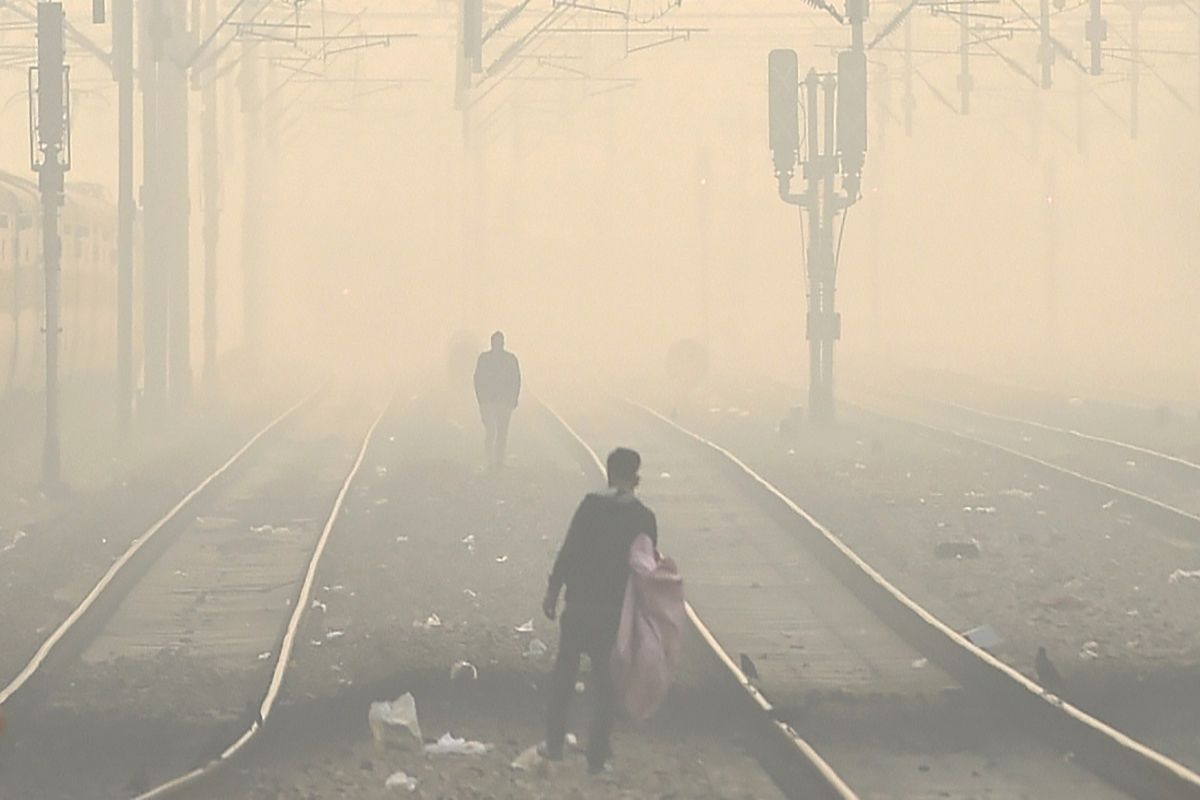New Delhi: A thick layer of smog enveloped Delhi and its adjoining areas on Saturday as the air quality deteriorated to ‘severe’ category with the overall AQI clocking at 499. For the unversed, an AQI between zero and 50 is considered ‘good’, 51 and 100 ‘satisfactory’, 101 and 200 ‘moderate’, 201 and 300 ‘poor’, 301 and 400 ‘very poor’, and 401 and 500 ‘severe’.
Delhi | Air quality dips in the national capital as the overall Air Quality Index (AQI) stands at 499 (Severe category). pic.twitter.com/aWp91VIEMM
— ANI (@ANI) November 13, 2021
Notably, Delhi and other cities of the NCR such as Gurugram, Noida, Ghaziabad, etc have been exposed to severe and hazardous air pollution levels over the last week in view of the increased instances of farm fires in Punjab and Haryana aggravated by the still winds and rising fog levels. According to an analysis by the Delhi Pollution Control Committee (DPCC), people in the national capital breathe the worst air between November 1 and November 15 every year.
‘Stay Indoors, Cut Down Vehicular Movement’
The central pollution watchdog has advised people to avoid going outdoors. Besides, it also directed the government and private offices to reduce vehicle usage by at least 30 per cent in view of severe air pollution. It also said that the implementing agencies, at an appropriate level, must closely monitor actions taken and submit a daily report to the pollution control boards and committees concerned which will review and further submit reports to the Commission of Air Quality Management (CAQM) and CPCB.
The Central Pollution Control Board (CPCB) said it was observed that meteorological conditions will be highly unfavorable for dispersion of pollutants till November 18 in view of low winds with calm conditions during the night.
Possible Reasons Why Delhi is Gasping
- As usual, Delhi has been choking for the last few days, as it generally does every year during this month. As per a report, vehicles accounted for more than 50 per cent of the city’s pollution during the early phase of this year’s winter, from October 24 to November 8.
- According to the Ministry of Earth Sciences’ air quality forecasting agency SAFAR, stubble burning has accounted for at least 25 per cent of Delhi’s PM2.5 pollution for nine days on the trot, starting November 4.
- Gufran Beig, the founder project director of SAFAR, said stubble burning generally contributes in PM2.5 but this time its coarser particles in PM10 are also becoming a lead pollutant at several locations in Delhi.
- “This is a new feature in the winter period. This is mainly because of the particle growth mechanism due to high humidity at night and increased humidity during the day probably due to water sprinkling which also increases the holding capacity of the air.
- Besides, the share of farm fires in Delhi’s pollution has also increased to 48 per cent, the highest since November 5, 2018, when it was recorded at 58 per cent.
Meanwhile, we have compiled dos and don’ts for people having occupations of prolonged exposure such as traffic policemen, traffic volunteer, rickshaw pullers, auto-rickshaw drivers, roadside vendors.
Dos:
- Remain indoors, or reschedule outdoors activities
- Consult the nearest doctor in case of breathlessness, giddiness, cough, chest discomfort or pain, irritation in eyes
- Use certified N-95 masks and follow user instructions
- Continue use of clean smokeless fuel gas or electricity for cooking and heating purpose.
- Use public transportation
Dont’s:
- Don’t burn leaves, wood, agriculture products, garbage
- Don’t go to places with heavy traffic and areas near polluting places and construction sites
- Don’t go for morning and late evening walks, run, jog and physical exercise
- Don’t open doors and windows during the mornings and late evenings
- Don’t smoke cigarettes and related tobacco products.
